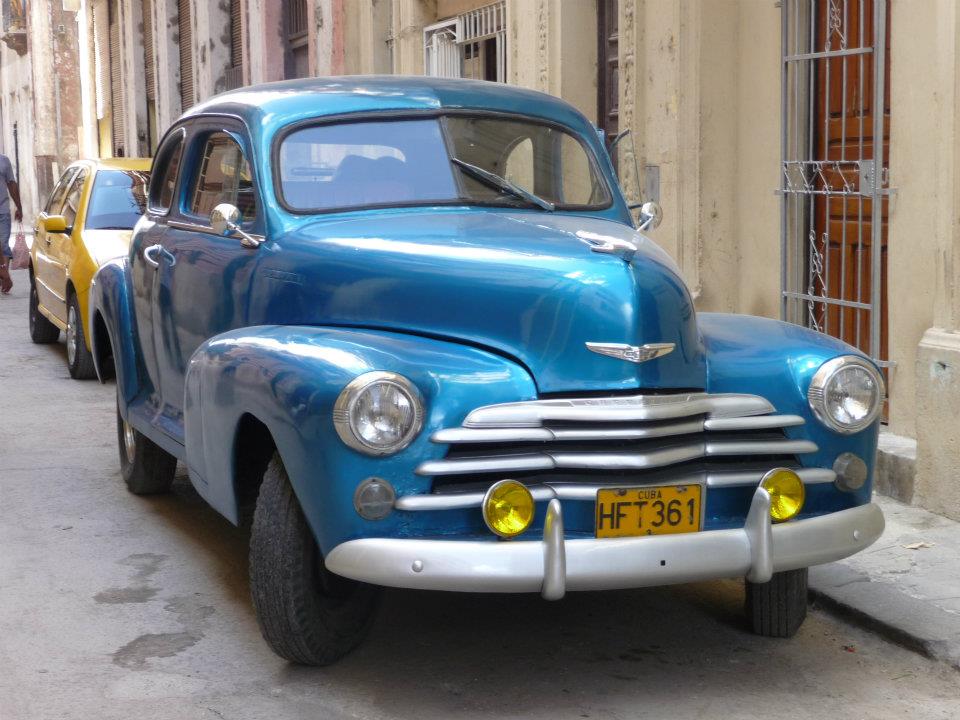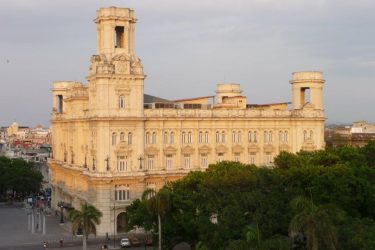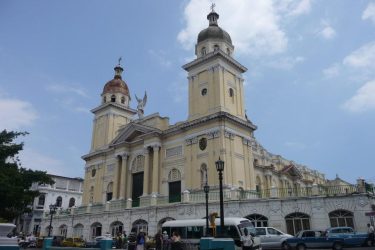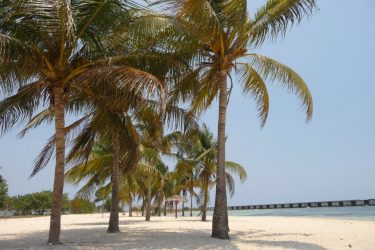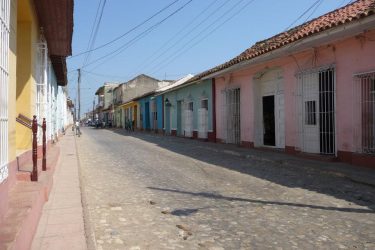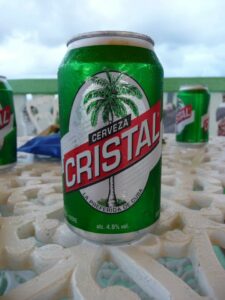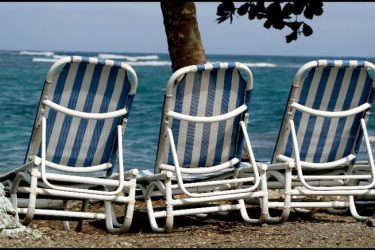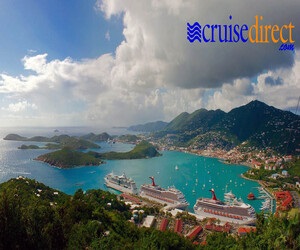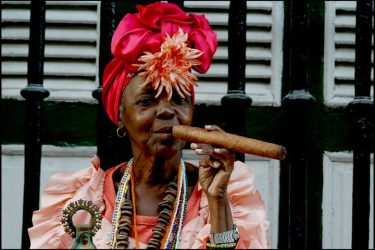Cuba travel may be a memorable experience. Cuba is a special place recognised for its thriving culture, breath-taking beaches, and extensive history. There are numerous reasons to visit Cuba, including its great cuisine, stunning architecture, and its internationally famous music and dance.
Havana, the capital of Cuba, is a popular tourist destination. Havana is like stepping back in time thanks to its vibrant colonial architecture and vintage American vehicles. Visitors can wander along the Malecón and take in the atmosphere while taking in the many museums and art galleries the city has to offer.
There are other sites in Cuba to visit besides Havana. In addition to having some of the nicest beaches in the Caribbean, Trinidad’s colonial town is a UNESCO World Heritage site. In Viales, where tobacco is farmed for the well-known Cuban cigars, visitors may also enjoy the verdant landscape.
Cuba’s people are one aspect that makes it different from other places. The people of Cuba are hospitable, friendly, and patriotic. By conversing with residents and taking part in daily life in Cuba, tourists can get knowledge of the country’s history and culture.
Due to Cuba’s poor infrastructure and scarce resources, visiting the nation might be difficult. Nevertheless, a vacation to Cuba can be exciting for those up for the challenge. This travel article, we will cover all of Cuba’s attractions, from Havana to Varadero, and all in between when you are visiting Cuba.
In this article, we will give you our list of what you should do and see when you visit the fascinating country of Cuba.
Explore Old Havana
The center of Cuba’s capital city is Old Havana (Habana Vieja), a UNESCO World Heritage a treasure mine of history and culture. Visitors transported to a bygone age by its cobblestone streets, vibrant facades, and historic structures. This UNESCO World Heritage site is a living museum where Baroque and Neoclassical influences coexist with Spanish colonial architecture.
It seems like entering a time capsule to take a stroll through Old Havana. The opulence of Plaza de la Catedral, which features an elaborate cathedral as its focal point, harkens back to colonial times. The well-known fortresses La Cabaa and El Morro serve as stewards of the city’s maritime past. The bustling public spaces, such Plaza Vieja and Plaza de Armas, are alive with the beat of the neighborhood.
In Old Havana, art and creativity are linked with cultural inquiry. The island’s thriving artistic sector showcased in galleries, studios, and art markets. Insights into Cuba’s artistic and rum traditions can be found at the Museo del Ron and the Museo Nacional de Bellas Artes.
Old Havana is more than just a gorgeous feast for the eyes. Strong Cuban coffee’s scent mixes with the traditional music played by street performers. It is impossible to resist the atmosphere that is created by the friendliness of the Cuban people and the vibrancy of the streets. Old Havana is filled with stories of tenacity, revolution, and the diverse fabric of Cuban identity.
Visit the Beautiful Beaches of Varadero
On Cuba’s northern coast, the resort community of Varadero is renowned for its stunning beaches and pristine waters. Tourists who wish to unwind, enjoy the sun, and participate in water activities like scuba diving and snorkelling frequently travel to Varadero.
Varadero Beach, a lengthy stretch of white sand beach with calm waters ideal for swimming, is one of the city’s major attractions. The beach is a terrific area to spend the day because cafes, bars, and stores surround it.
The Varahicacos Ecological Reserve, a nature reserve situated on the outskirts of the town, is another well-liked destination in Varadero. Along with a network of trails that are perfect for trekking and exploring, the reserve is home to numerous types of flora and animals.
The Dupont Mansion is a must-see destination in Varadero for history buffs. This early 20th-century estate was constructed by an American millionaire and is now a museum that chronicles the history of both the town and the mansion.
Explore the Historic Town of Trinidad
The historic town of Trinidad, which lies tucked away between the Caribbean Sea and the Escambray Mountains, is a living museum of colonial-era Cuba. With its cobblestone lanes, colorful facades, and well-preserved architecture, this UNESCO World Heritage site offers an enthralling voyage through time.
Plaza Mayor, Trinidad’s picturesque center square, which is encircled by pastel-hued colonial homes and the famous Museo Romantico, is the beating heart of the city. Live music fills the square as dusk falls, luring locals and tourists alike to dance and take in the energetic ambiance.
You may get sweeping views of the town and its surrounds by ascending the Museo Romantico’s tower, which also gives you a chance to appreciate the area’s distinctive terrain. You can find artisan workshops while exploring the maze-like streets, where talented artisans produce beautiful pottery and other traditional crafts.
The Valle de los Ingenios, a valley filled with the remains of sugar mills and slave quarters, is located not far from Trinidad and serves as a reminder to travelers of the area’s historical connections to the sugar trade. The adjacent Playa Ancón offers the ideal fusion of culture and seaside appeal, inviting relaxation on its golden dunes.
Trinidad is a must-visit location for anybody looking for a glimpse into Cuba’s colonial history and the lasting cultural richness that defines this charming town due to its authenticity, preserved architecture, and kind locals.
Experience the Cuban Nightlife and Dance Culture
As the sun sets, a symphony of rhythm and energy comes to life in Cuba. Cities like Santiago de Cuba and Havana convert their streets into bustling playgrounds that let visitors feel the spirit of the island first-hand. Live bands and musicians fill the air with the contagious sounds of salsa, son, and Afro-Cuban rhythms, which are the lifeblood of Cuban nightlife.
As varied as Cuba’s culture, the possibilities for a night out range from eerie taverns to exciting dance clubs. Visit the renowned Buena Vista Social Club, where vintage tunes echo in a grand setting. Language boundaries do not stop the joy of dance and music from bringing people together.
Neighbourhood “casas de la msica” offer a close-up look at local nightlife for those looking for an authentic encounter. Salsa enthusiasts show off their moves on the dance floors, while spontaneous gatherings and street performers liven up the mood.
Cuban nightlife is a cultural experience that unites people and preserves traditions, not just a place to have fun. You merge into the bright mosaic of Cuban nightlife as the warm Caribbean breeze envelops you and the music draws you to the dance floor.
Visit the Museum of the Revolution
In Havana, the Museum of the Revolution (Museo de la Revolución) is a sombre reminder of Cuba’s turbulent past and independence struggle. This museum, which is housed in the former Presidential Palace, provides a thorough tour of the nation’s revolutionary past.
The museum’s displays are an enthralling fusion of artefacts, images, papers, and memorabilia that tell the story of the development of Cuba’s revolutionary movements, from the early struggles against colonial control to the success of the 1959 Revolution. Highlights include Che Guevara’s personal items and Fidel Castro’s actual Granma boat.
The architecture of the museum, with its neoclassical façade and expansive rooms, contributes to the historical atmosphere. Remains of a rebel tank and a fighter plane may be seen in the courtyard in the centre, which emphasises the notion of struggle and triumph.
A thorough grasp of Cuba has complicated past and the values that have defined the country can be gained by visiting the Museum of the Revolution. The exhibitions honor the leaders of the revolution while also displaying the perseverance of the Cuban people in their fight for independence and social justice.
Visit Baracoa in Cuba
With its distinctive fusion of history, nature, and culture, Baracoa, Cuba’s undiscovered gem, draws tourists. This lovely village is tucked away on the island’s easternmost point, surrounded by the majestic Atlantic Ocean, gorgeous beaches, and lush rainforests.
The charm of Baracoa rests in its authenticity. Because of its isolation, its culture has been preserved, and Afro-Cuban and indigenous influences may be heard in the food, dancing, and music. Baracoa is known as the cradle of Cuban chocolate, and the Casa del Chocolate, a local landmark, offers a delicious excursion into the world of cocoa.
The Parque Nacional Alejandro de Humboldt, a UNESCO-listed biosphere reserve recognised for its various ecosystems, is one of the area’s top attractions for nature lovers. The well-known table mountain El Yunque offers a strenuous walk with spectacular scenery. Both Playas Maguana and Nibujón have serene beaches with clear waters that are ideal for unwinding.
The friendly nature of Baracoa extends to its residents, who are happy to share their customs and way of life. The town’s pristine beauty and simplicity make it a shelter for travelers looking for an experience off the main road, where the rhythms of nature and culture converge to produce a trip in Cuba that will be unforgettable.
Visit the Che Guevara Mausoleum
A shrine and memorial to the illustrious revolutionary hero Ernesto “Che” Guevara can be seen in the Cuban city of Santa Clara. The bones of Che Guevara and 29 other warriors who died in Bolivia are kept in this imposing edifice.
A magnificent bronze figure of Che Guevara, which serves as a potent symbol of his enduring legacy and commitment to revolutionary ideas, is the focal point of the mausoleum. The nearby museum features artefacts, images, and records that provide insight into Che’s life, his participation in the Cuban Revolution, and his later attempts to enflame revolutionary sentiment around the globe.
In the mausoleum, visitors can pay their respects to Che Guevara’s grave and consider how significantly he influenced both Cuban history and the world’s revolutionary movements. The museum’s displays offer insightful perspectives into the life and ideas of this legendary individual, while the site’s tranquil settings and solemn ambiance foster a sense of reverence.
The Che Guevara Mausoleum is a testimony to Che’s lasting legacy as a symbol of resistance, justice, and change as well as to his profound impact on Cuban history.
Visit the Viñales Valley
A tranquil haven from the bustle of city life, Viales Valley is a beautiful natural beauty tucked away in the center of Cuba. This UNESCO World Heritage site is well known for its spectacular landscapes made up of subterranean caves, rich tobacco farms, and towering limestone mogotes. The valley’s distinctive geology and lush vegetation produce a strange view that seems almost extra-terrestrial.
Both nature lovers and those interested in culture will find Viales to be an excursion. Take a hike or a horseback ride through the lush countryside to observe the growth of tobacco, a crucial aspect of Cuban culture. Underneath the surface of the earth, where delicate stalactite formations create a magical underground environment, guided cave tours reveal hidden wonders.
Viales is not simply known for its stunning scenery; it’s also a location to meet the kind-hearted residents whose lives are closely entwined with the environment. The quaint community has a relaxed vibe, and the local restaurants and rustic homestays offer a genuine look into Cuban life.
Viales charms with its serenity and alluring beauty as the sun sets behind the mogotes and casts a warm glow over the valley. Every turn in the road offers a fresh view on the breath-taking beauty that characterizes this amazing region of Cuba. Where time slows down a place.
Visit Revolution Square (Plaza de la Revolución) in Havana
A trip to Havana’s Revolution Square (Plaza de la Revolución) is both a celebration of the country’s continuing revolutionary spirit and a tour through its turbulent past. This famous square, which is among the biggest in the world, exudes significance that is felt by both residents and visitors. The imposing José Mart Memorial, honouring the national hero and key figure in Cuba’s liberation war, stands as a testament to the country’s cohesion and pride.
The image of Che Guevara atop the Ministry of the Interior building is what draws attention, though; it has crossed international boundaries to become a symbol of the ideas of revolution. Fidel Castro has given legendary speeches and held colossal demonstrations there that have reflected the fervour of the Cuban Revolution.
As you enter Revolution Square, you can sense the weight of time in the wide open space. The trip provides an opportunity to consider Cuba’s history, its revolutionary struggle, and the unwavering resolve of its people. A trip to Revolution Square in Havana is essential if you are interested in politics, history, or just want to learn more about Cuban culture.
Festivals in Cuba
The vibrant celebrations of Cuban culture and history are reflected in the country’s festivals. The Santiago de Cuba Carnival, which takes place in July, is a bright burst of colour and rhythm that brings the streets to life with lively parades, colourful traditional attire, and contagious music. An annual highlight in December, the Havana International Jazz Festival draws jazz fans from all over the world to celebrate the island’s musical excellence. The Festival del Habano, which celebrates Cuba’s famous cigars, offers a distinctive fusion of tradition and elegance while displaying the nation’s workmanship.
Afro-Cuban Santera celebrations reveal the island’s ingrained spirituality through rhythmic dances and ceremonial rituals that pay homage to gods and ancestors. These celebrations highlight the complex blending of Spanish and African influences in Cuban culture. Cuba’s festivals provide an enthralling look into the heart and soul of the country, inspiring a sense of togetherness and celebration that resonates with both locals and tourists, whether you are tapping your feet to the beat of the drums or marveling at the lavish displays of ingenuity.
In conclusion, Cuba is a nation that defies assumptions and welcomes you to discover its past, present, and future. Cuba’s appeal rests in its capacity to take you to a place where time appears to have stopped, whether it is the bustling streets of Havana or the calm landscapes of Viales. The genuine enchantment of Cuba rests in the personal connections and discoveries you will make along the road, but this book offers a look into the wealth of experiences Cuba has to offer. Pack your luggage, embrace your sense of adventure, and set out on a tour you will not soon forget around the captivating island of Cuba.



